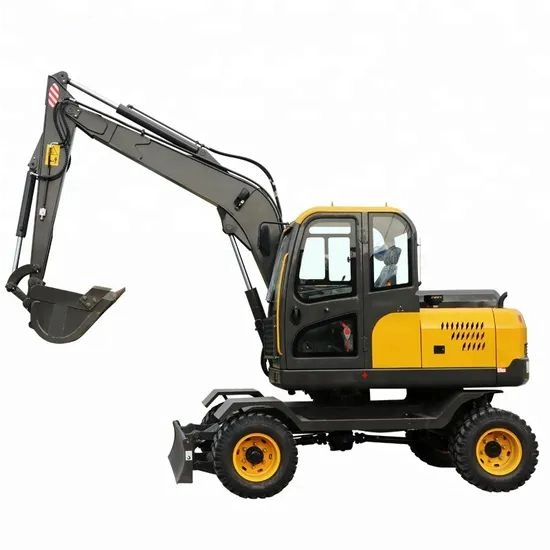Wheel excavators, with their characteristics of flexibility, convenient transition, and high operating efficiency, have a wide range of application scenarios, covering multiple industries and engineering types. The following is a detailed introduction to their main application scenarios:

I. Municipal Engineering and Urban Construction
- Road maintenance and reconstruction: In projects such as widening, repairing urban roads and laying pipelines (such as water supply, gas, and cable pipelines), wheel excavators can flexibly dig trenches and level the road base. Moreover, due to the small damage to the road surface caused by tire driving, they are suitable for working on built urban roads.
- Construction of municipal facilities: For example, in the construction of urban green belts, square site leveling, and garbage transfer station construction, small or medium-sized wheel excavators can work efficiently in narrow urban spaces, assist in loading and unloading materials, and reduce interference with surrounding traffic and residents' lives.
- River and drainage engineering: For cleaning sludge in urban inland rivers, digging drainage ditches, and repairing drainage pipelines, wheel excavators can quickly reach riversides or low-lying areas via roads to complete earth excavation and transportation.
II. Construction Field
- Small building foundation construction: In the foundation excavation of small buildings such as low-rise residences and factories, wheel excavators can quickly complete foundation pit excavation and earth transfer. Unlike crawler excavators, they do not rely on trailers for transition, making them suitable for scenarios where frequent movement between construction sites is required.
- Demolition and site cleaning: Wheel excavators equipped with breakers can be used for the demolition of small buildings and crushing of concrete blocks; general-purpose wheel excavators can clean construction waste and level the site after demolition to prepare for subsequent construction.
- Material loading, unloading and short-distance transportation: In construction sites, wheel excavators can use buckets or log grapples to load and unload building materials such as sand, bricks, and steel, and cooperate with trucks to complete short-distance material transportation, reducing the complexity of mechanical cooperation.
III. Agriculture and Forestry
- Farmland transformation and water conservancy construction: In agricultural production, wheel excavators can be used to dig irrigation ditches, level farmland, and transform terraced fields. They are especially suitable for farmland consolidation in plain or hilly areas, as tire driving causes less rolling damage to cultivated land.
- Forestry operations: Wheel excavators equipped with log grapples are efficient tools for loading, unloading, and transporting wood. They can quickly grab logs and plates in forest farms and wood processing factories to complete loading or stacking; in addition, they can clean up miscellaneous trees in forest land and open up forest roads.
IV. Road and Transportation Construction
- Rural road construction: In links such as subgrade excavation, filling and leveling, and side ditch digging of rural roads and county-township roads, wheel excavators can reach the construction site without complex transportation, can adapt to the bearing capacity of rural roads, and have much higher operational flexibility than crawler excavators.
- Expressway auxiliary operations: In expressway service area construction, slope trimming, and emergency repair (such as landslide cleaning), wheel excavators can respond quickly and cooperate with large machinery to complete local fine operations.
V. Mining and Resource Development
- Small-scale mining: In scenarios such as small quarries and sandstone mines, large wheel excavators can cooperate with breakers to crush rocks or directly excavate ores. At the same time, they can use the advantage of tire driving for short-distance material transportation in the mining area, reducing equipment scheduling costs.
- Mine auxiliary projects: Such as building mine roads, digging mine pit drainage ditches, and leveling ore stacking sites, the versatility of wheel excavators can meet various auxiliary operation needs.
VI. Other Special Scenarios
- Emergency rescue and disaster relief: In the work of ruins cleaning, road dredging, and temporary drainage after disasters such as floods and earthquakes, wheel excavators can quickly reach the disaster area, clear obstacles, and open up rescue channels with flexible operations.
- Ports and logistics parks: In ports or logistics parks, wheel excavators can be used for auxiliary loading and unloading of containers, short-distance cargo handling, and site leveling. They are especially suitable for working in areas with hardened ground to avoid damage to the ground by crawlers.
In conclusion, the application scenarios of wheel excavators are mainly concentrated in working conditions that require frequent transition, have requirements for ground protection, and have relatively limited operating space. They complement crawler excavators and have more advantages in small and medium-sized projects and urban operations.





